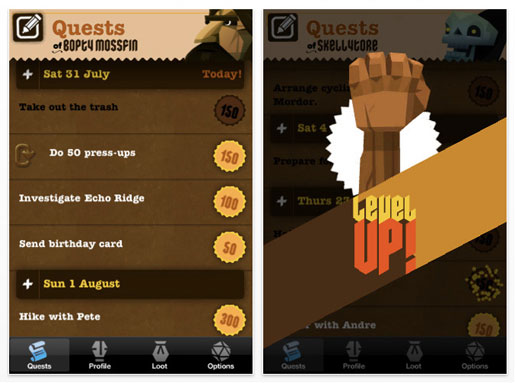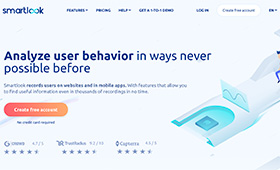Is this the End of Gamification?
Gamification has become a popular topic within online marketing for the last few years. However, it has become a hot topic for debate, and has received a significant amount of criticism from blogs and prominent individuals on the internet.
In this article, we look at what gamification is, why it is so controversial, and what this means to businesses interested in exploring this subject today in order to answer the question – is gamification dead?
What is gamification?
Gamification aims to bring the mechanics from games which make them fun and engaging, and introduce them into non-game contexts. One of the most prominent examples of the gamification of services was the rise of foursquare, which rewarded users with virtual ‘badges’ for visiting locations, and then allowed users to prominently display the badges they’ve acquired, as an incentive for visiting local businesses. By partnering with these businesses to run promotions for ‘checking-in’ to locations, foursquare therefore aimed to make shopping a game.

Foursquare rewards users with virtual badges.
Although its popularity has spiked in recent years, gamification is not necessarily a new phenomenon. Frequent Flyer programmes, where points are rewarded for travelling and can later be redeemed for prizes or benefits are an early example of gamification, encouraging customers to fly more often, and display brand loyalty, in exchange for bonuses.
What does gamification do?
By utilising game mechanics, such as levelling up, achievements or challenges, gamification promises increased engagement from customers, and increased customer retention rates.
When LinkedIn started rating each profile’s strength based on the completeness of its data they found this incentivised users to fill out their profiles completely, thereby boosting the value of LinkedIn’s data.
If done correctly, gamification can drive word of mouth among customers, and become a form of advertisement for a company, without customers recognising it as such. However, it has been shown to not only be useful for businesses and the principles can be applied to a number of other sectors such as education, personal fitness and the benefit of society as a whole.
For example the iPhone game “Epic Win” creates a complete RPG around the player’s to-do list, giving players the ability to level up their character based on the completion of their chores.

Epic Win Real-Life iPhone To-Do List RPG
The academic Richard Bartle proposed that gamers can be divided into different categories, based on their goals from games. Many of the practical implementations of gamification are targeting specific Bartle ‘player types’. This is most evident in the use of badges, high scoreboards and other visual means of distinguishing players, which are directly targeted at the ‘achiever’ player type, who will “go to great lengths to achieve rewards that confer them little or no game play benefit simply for the prestige of having it”.
Achievers are characterised by their attraction to games that can be ‘beaten’, and the opportunities to differentiate their ability in games from that of other players. Badges are therefore ideally suited to Achievers, for they give players the means to show off their dedication to the gamified website, especially when the website includes the equivalent of a high score board, or player ranking. Problems arise when businesses assume that implementing game features designed for a single player type will appeal to all of their customers, inviting criticism of gamification generally.
The backlash against gamification
Ever since its recent spike in popularity, gamification has seen an equally prominent backlash against its implementation on many popular sites. In 2012 foursquare underwent a transformation and removed many of its gamified elements, releasing a completely redesigned app. Their strategy had been dependent on giving virtual badges to players, and they recognised that this mechanic was over reliant on targeting a single type of player, which didn’t necessarily correlate with their customers.
This conclusion has been reached by many businesses, who had implemented ‘badges’ for their business in the hope of gamifying their site in a cheap and quick manner. The existence of “instant gamification” platforms and APIs enabled websites to add badges with very little effort, and without the requirement to perform user research to tailor the experience to their customer’s needs. Businesses quickly discovered that ‘just adding badges’ did not creating a lasting relationship with their customers, leading to some hasty retreats and abandonment of gamification altogether.
Prominent academics, such as Ian Bogost and Sebastien Deterding have rebelled against the lazy implementation of game mechanics to meet business needs, and argue that ‘cut and paste’ implementations of mechanics fail to understand the depths of what makes games compelling. Raph Koster’s book “A Theory of Fun” explains that the fun of games is acquired through the application of learned concepts in new and novel ways to overcome challenges, and no ‘generic’ gamification platform can create this experience.
This has led to a number of damning blog posts and literature reviews deconstructing the ‘myth’ of gamification, and exposing how its implementation through generic web based templates is derived from a poor understanding of the psychology behind games, and is purely pandering to the commercial needs of marketers.
What does this mean for the future?
So is it time to write off gamification? I’d argue not, since there is no denying that the potential exists for businesses to excite customers through learning from games – however some finesse is needed. Despite the many risks, games have been shown to engage players, creating a huge amount of loyalty and the potential for customer retention. Players are very vocal, share positive experiences with a wide audience, and are eager to form new relationships with games and services. When the gamified service exceeds the player’s expectations and delivers added benefits, it can lead to a huge amount of success, as seen with the popular game ‘Zombies, Run’. This app combined personal fitness with an interactive story about a zombie apocalypse, and gave players an incentive to exercise – to save their lives!
Businesses looking to ‘gamify’ their experience therefore need to do it right, as ‘off the shelf’ solutions will not work. Luckily there are many tools that can help with this. The quickest and cheapest is to evaluate existing implementations, and derive best practises (and what mistakes to avoid!).
Before diving in and creating the experience, it is also important to perform some user research – discover who the customers are, what appeals to them, and what do they want out of their interaction with the business. The good news is that by tailoring the experience to customer needs, the interaction can be mutually beneficial and fun!
This article was picked up by a LinkedIn UX community, whose members debated on the matter whether gamification really is dead or not. Read the entire discussion.






No responses yet to “Is this the End of Gamification?”